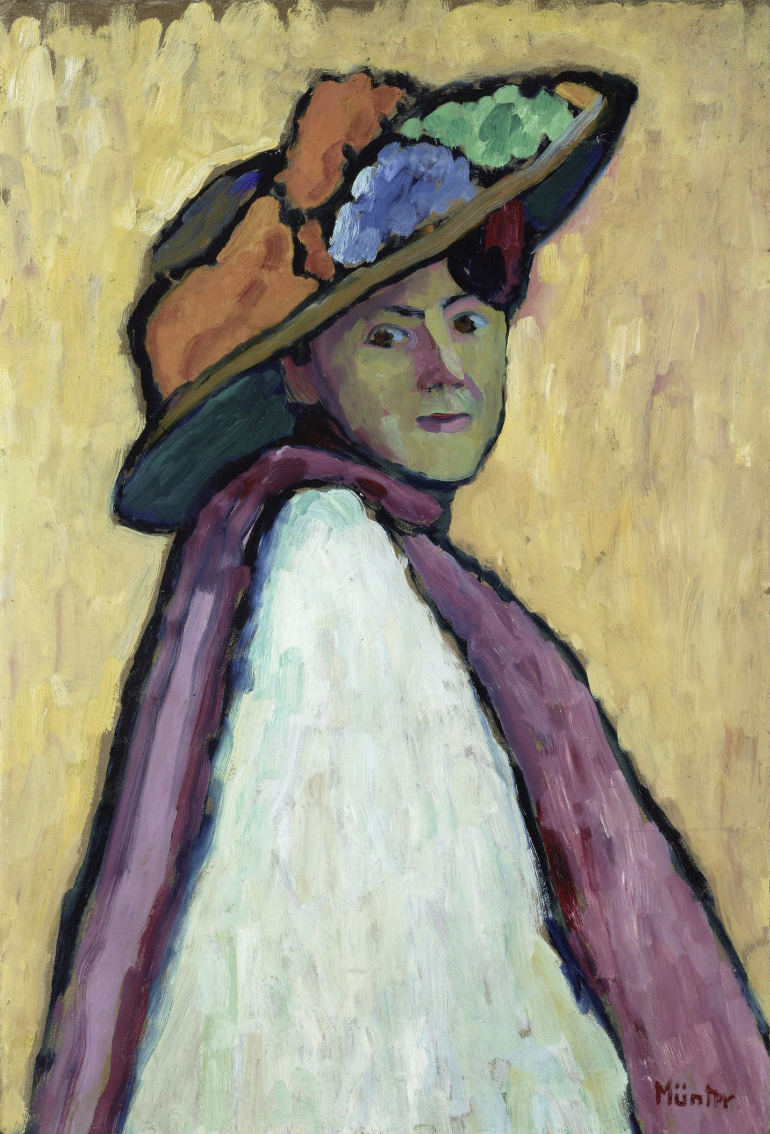Expressionists: The Creative Melting Pot
Franz Marc, Tiger
I recently visited a splendid exhibition of Expressionist art at the Tate Modern, London (until 20 October).
‘We were only a group of friends who shared a common passion for painting as a form of self-expression. Each of us was interested in the work of the other…in the health and happiness of the others.’
Gabriele Munter
The Expressionists were a loose community of artists based around Munich in the early 1900s. Originating from Eastern Europe and North America, from Russia and Austro-Hungary, they endeavoured to convey subjective interpretations of the world around them; to express the meaning of emotional experience rather than the physical reality. Painting simplified forms, in bold colours with carefully framed compositions, they sought stimulus from folk art and foreign cultures; from spiritualism and child psychology; from colour theory and other media. They were true creative pioneers.
‘After a short period of agony, I took a giant leap forward, from copying nature – in a more or less Impressionist style – to feeling the contents of things, abstracting, conveying an essence.’
Gabriele Munter
Gabriele Münter Portrait of Marianne von Werefkin 1909 Lenbachhaus Munich, Donation of Gabriele Münter, 1957 © DACS 2024
At the exhibition we see vivid representations of couples debating at the dining room table; promenading in the park; reclining on a hillside in the sun. There are mystical skating rinks, circuses and stage shows; woozy street scenes and dreamy landscapes. With bold outlines Gabriele Munter presents elegant society women with purposeful stares – here’s a benign lady in a broad bright hat and purple shawl; and another with neat hair, sharp eyebrows and almond eyes. Franz Marc paints animated wildlife - a sinuous yellow tiger in the undergrowth; two brown deer playing in the snow; a sweet-eyed doe looking up to catch the light. And most radical of them all, Wassily Kandinsky gives us kaleidoscopic interiors, the milking of a psychedelic cow, and mysterious sacred visions - staging posts on the path to pure abstraction.
‘[Art has the power] to awaken this capacity for experiencing the spiritual in material and in abstract phenomena.’
Wassily Kandinsky
Bavaria provided a relatively liberal and open environment for the Expressionists to work. There was a prosperous middle class and a thriving academic and scientific community. They visited galleries and museums, studied Islamic art and purchased Japanese prints.
Some of them were fascinated by children’s creativity and toys; by recent psychological studies suggesting that kids had spiritual inner lives. Maria Franck-Marc painted children captivated by flowers; a girl in the garden cradling a toddler.
They explored colour theory - the impact of colour on mood - and investigated synaesthesia - experiencing one sense through another. In ‘Impression III (concert)’ Kandinsky, a skilled cellist, created a chromatic visual response to a musical performance by Arnold Schonberg.
‘Kandinsky paints pictures in which the external object is hardly more to him than a stimulus to improvise in colour and form and to express himself as only the composer expressed himself previously.’
Arnold Schonberg
Wassily Kandinsky - Impression III (Concert), 1911
Often members of the group went on sketching holidays to Murnau, a rural town in the foothills of the Bavarian Alps - swimming in the lake, skiing in the mountains, designing their own gardens. As they created work, they also debated ideas.
‘In every house one found at least two ateliers under the roof, where sometimes not so much was painted, but where always much was discussed, disputed, philosophised and diligently drunk.’
Wassily Kandinsky
The Expressionists were as much engaged with the past as the future. A rather beautiful Kandinsky image depicts a mythic knight riding along the river’s edge with a noblewoman in his arms and the luminous walls of a Russian town in the distance. They collected Bavarian folk craft and religious artefacts, experimenting with the traditional technique of reverse glass painting - by which an image is created on one side of a glass panel and viewed from the other.
The movement was also interested in pre-Christian faiths, Hinduism and Buddhism; in the emergent theories of Theosophy and spiritualism.
‘I’m striving to intensify my feeling for the organic rhythm of all things, trying to feel myself pantheistically to the quivering and flow of blood in nature, in trees, animals, the air.’
Franz Marc
The Expressionists teach us to break down boundaries wherever we see them; to seize inspiration wherever we find it. Theirs was a true creative melting pot, encapsulated by the Blue Rider Almanac - from which they took their group name, Der Blaue Reiter. Published in 1912, this volume of collected images and academic texts, included folk, religious and children's art, and featured works from all over the world.
‘Blue Rider…will be the call that summons all artists of the new era and rouses laymen to hear.’
Advert for The Blue Rider Almanac, 1911
Sadly, with the outbreak of the First World War, the collective dispersed. Marc was killed in combat, aged just 36. Kandinsky returned to Russia, others fled to Switzerland. This optimistic, outgoing, internationalist movement seemed suddenly out of step with the times.
‘In our case the principle of internationalism is the only one possible… The whole work, called art, knows no borders or nations, only humanity.’
Draft preface for The Blue Rider Almanac, 1911
Riding Couple by Wassily Kandinsky, 1906-1907
LENBACHHAUS MUNICH; DONATION OF GABRIELE MÜNTER, 1957; TATE MODERN
‘Where do you end?
Where do I begin?
Start over again,
Feels like we're melting, melting.
That's when I melt into you,
I melt into you.’
Kehlani, ‘Melt’ (N Perez, A Wansel, K A Parrish)
No. 471



